Innovation and excellence are two fundamental pillars for achieving success in the modern work environment. In an era where economic and technological changes are accelerating, the ability to innovate becomes essential to face challenges and stay ahead of the competition. Innovation includes developing new ideas and improving products and services, while excellence requires companies to commit to delivering higher value to customers through exceptional quality and unique experiences. The combination of innovation and excellence creates strong competitive advantages that enable organizations to achieve sustainable growth and remain adaptable to the rapid changes in the market
The Role of Consulting Firms in Fostering Innovation
The role of consulting firms in promoting innovation and excellence in business is of paramount importance and a vital matter in today’s competitive business environment. Here are some key points on how consulting firms contribute to fostering innovation:
-
Analyzing the Current Environment:
Consulting firms provide a comprehensive analysis of the current situation within the organization, helping to identify strengths, weaknesses, and available opportunities. This process gives companies a better understanding of the market and their position within it.
-
Developing Innovation Strategies
Consulting firms assist in developing clear and specific innovation strategies that align with the organization’s goals and visions. This includes prioritizing innovation and planning action paths for achieving success.
-
Providing Knowledge and Expertise:
Consulting firms possess a diverse range of expertise in multiple fields, enabling them to transfer current knowledge and innovative applications to companies.
-
Facilitating Digital Transformation:
Consulting firms play a significant role in facilitating digital transformation by providing new technological solutions such as artificial intelligence and cloud computing, which enhances the efficiency of operations
-
Training and Capacity Development
Consulting firms offer training programs and workshops to equip employees with the necessary skills to use new technologies and innovative strategies, thereby enhancing the capacity for innovation within the organization.
-
Promoting a Culture of Innovation:
Consulting firms work to promote a culture of innovation within organizations by stimulating creative thinking and a culture of experimentation, making it easier for relevant teams to embrace change and explore new ideas.
-
Analysis and Measurement:
Consulting firms assist in establishing key performance indicators (KPIs) to measure the effectiveness of innovation initiatives, and they contribute to continuous analysis and process improvement based on data.
-
Collaboration and Partnerships:
Consulting firms can facilitate strategic partnerships with other companies, universities, and research centers, enhancing innovation opportunities through the exchange of knowledge and expertise.
-
Managing Innovation-Related Risks:
Consulting firms help identify and assess innovation-related risks and develop strategies to mitigate them, supporting a safe environment for experimentation and development.
Through these roles, consulting firms significantly contribute to enhancing innovation and corporate excellence, enabling them to stay ahead in changing markets.

Strategies for Achieving Competitive Advantage
Achieving competitive advantage is vital for any organization seeking excellence in the market. Consulting firms offer a range of strategies that can help organizations improve their position and enhance their performance. Here are some strategies for achieving competitive advantage:
1. Identifying a Unique Value Proposition
Understanding customer needs and providing innovative products that meet those needs.
2. Enhancing Customer Experience
Personalizing services and enhancing communication with customers to increase loyalty.
3. Boosting Operational Efficiency
Using principles such as Lean to improve processes and automate routine tasks.
4. Expanding Market Reach
Targeting new markets and diversifying products to attract different segments.
5. Investing in Technology
Analyzing data and using artificial intelligence to improve efficiency.
6. Forming Strategic Partnerships
Collaborating with other companies and research centers to enhance innovation.
7. Focusing on Digital Marketing
Using online marketing strategies and analyzing campaign performance.
8. Focusing on Sustainability
Developing sustainable practices and improving brand image.
9. Developing Employees
Investing in employee training and fostering internal innovation.
10. Continuous Monitoring and Evaluation
Regularly evaluating performance and making strategic adjustments as needed.

Challenges in Implementing Innovation in Organizations
Implementing innovation in organizations can be a complex process, as companies face a range of challenges that may hinder their progress. Here is an analysis of the challenges of implementing innovation in organizations, potential difficulties, and how to overcome them:
1. Resistance to Change:
Employee resistance to changing work methods can be overcome by fostering a culture of innovation through training and effective communication.
2. Resource Scarcity:
Insufficient financial or human resources can be addressed by allocating a dedicated budget and forming strategic partnerships
3. Poor Project Management:
Lack of experience in managing innovation projects can be mitigated by creating specialized teams and using modern project management methodologies.
4. Ambiguous Strategic Visions:
Lack of clarity in strategic directions can be resolved by setting clear goals and conducting market analysis to understand future trends.
5. Focus on Costs:
Balancing cost reduction with the benefits of innovation can be achieved by analyzing return on investment and educating management on the importance of innovation.
6. Difficulty in Measuring Success:
Innovation results can be effectively measured by defining clear key performance indicators (KPIs) and conducting periodic evaluations.
7. Recruitment Challenges:
Attracting and recruiting innovative talent can be achieved by offering competitive incentives and fostering a stimulating work environment.
8. Intellectual Property:
Innovative ideas can be protected by developing intellectual property protection policies and raising awareness of their importance.
9. Time Pressures:
The impact of work pressures on innovation can be overcome by allocating dedicated time for innovation.
10. Data Analysis:
Difficulties in data collection and analysis can be overcome by investing in data technology and conducting continuous market research.
How Can the Success of Innovation Initiatives Be Measured?
The success of innovation can be measured by defining key performance indicators (KPIs) such as increased return on investment, customer satisfaction, the number of new products launched, and improved operational efficiency. Regularly evaluating results helps improve future strategies.
In conclusion, it is clear that innovation and excellence are vital elements for enhancing sustainability and success in the changing business world. The increasing challenges in the market require organizations to adopt an innovative culture that is an integral part of their strategies. Innovation is not limited to introducing new products but extends to improving processes, providing a distinctive customer experience, and building strategic partnerships.
Therefore, leaders and entrepreneurs should recognize that the journey of innovation requires commitment and a long-term vision. Ultimately, organizations that embrace innovation and excellence at the core of their strategies will be the ones that continue to achieve success and growth in the future.

